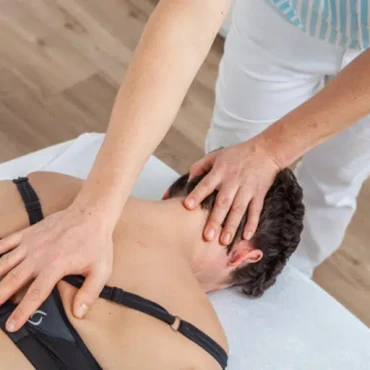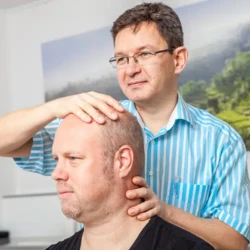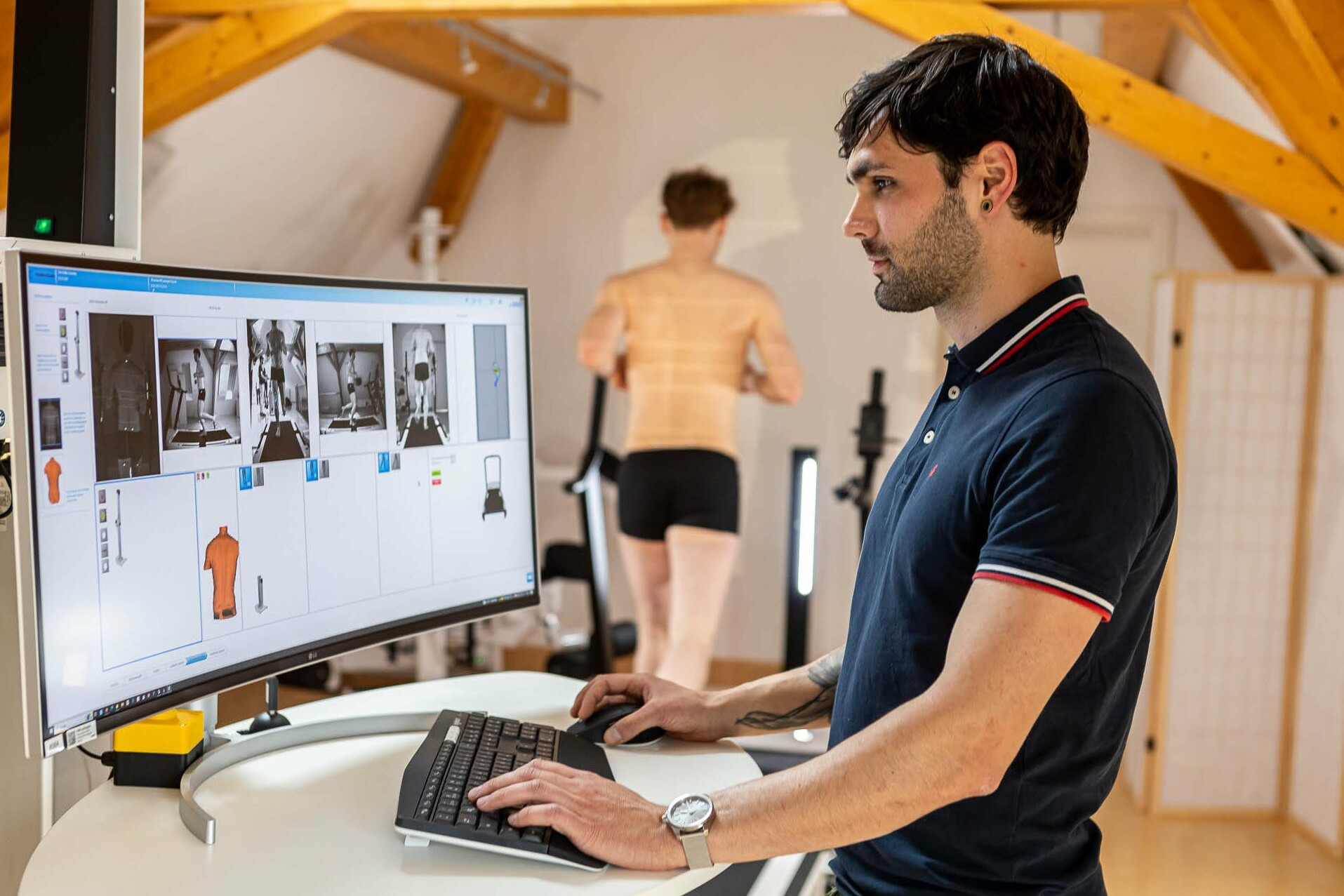Holistic posture and movement analysis
In our professional holistic gait and running analysis, we analyse the entire body from the feet, legs and pelvis to the spine in just one measurement process. This provides us with a dynamic 4D spine measurement, an analysis of the pelvic statics, the leg axes and joint angles from the hips and knees to the ankle joints as well as a foot pressure measurement in motion. The measurement system provides us with valuable information about the causes of
Spinal curvature, perpendicular and lateral deviation as well as correlations to pelvic torsion, leg axes or buckling of the feet.
Supplemented by an isometric strength measurement, we can use this method to make targeted and effective training and therapy recommendations or create individual insoles to improve the overall statics of the body and harmonise movement sequences.
Why the 4D high-performance motion lab?
For most people, there is hardly anything more important than being able to move without pain and with pleasure. However, we rarely realise the complex interplay between our muscles, tendons and joints when we stand or walk.
Even small misalignments, muscular imbalances, shortening or unfavourable changes in posture can lead to chaining and make themselves felt in completely different areas of the musculoskeletal system.
For a very long time, our body can compensate for this by adopting protective postures and evasive movements elsewhere, but at some point it inevitably leads to overuse complaints or even increased wear and tear.
If you want to get to the bottom of the causes, you always need a holistic approach.
In addition to a thorough medical history and physical examination, the posture and movement analysis in our 4D high-performance Motion Lab helps us to carry out a comprehensive and precise diagnosis.


A precise view of every movement
During our professional, holistic gait and running analysis, we examine the entire body from the feet, legs and pelvis to the spine in just one measurement. Over 30 measuring points are marked on your body, a line pattern is projected onto your back and your movement is recorded throughout the entire measuring process by 5 high-resolution cameras from 4 directions at 240 images per second, while the exact rolling process of your feet is recorded synchronously by highly sensitive pressure plates in the treadmill becomes. This gives us a synchronous dynamic 4D spinal measurement, an analysis of the pelvic statics, the leg axes and joint angles from hips to knees to ankles, as well as a foot pressure measurement in motion.
Dynamic spine measurement
Dynamic 4D spine measurement is a radiation-free, light-optical procedure in which a video grid analysis of your body surface is carried out and a virtual plaster cast of your back is taken. Using this data, a dynamic 3D model of the spine is reconstructed using special software developed with the University of Mainz. The measuring system provides us with valuable information about spinal curvature, vertebral body rotation, vertical and lateral deviations as well as pelvic position and torsion throughout the entire movement process. We can precisely document and analyze posture problems, muscular imbalances and static spinal changes.
Highperformance Gang- und Laufanalyse mit bis zu 30km/h, wie beim Profisportler (nur 4x in Deutschland)
Parallel to the spinal measurement, the gait or running analysis takes place. In addition to recording the rolling of your feet, reflective markers are attached to certain points on the body and recorded from all four directions during the measurement, so even the slightest incorrect posture, asymmetries or unfavorable movement sequences can be identified and document it with precise angle measurements.
High-performance gait and running analysis at up to 30 km/h, just like a professional athlete (only 4x in Germany)
In case of these complaints:
-
Posture problems, scoliotic posture disorders
-
Pelvic obliquity
-
Leg length difference
-
Leg axis misalignments
-
Muscular imbalances in the lumbar spine and pelvis, foot misalignments to diagnose ascending chains


